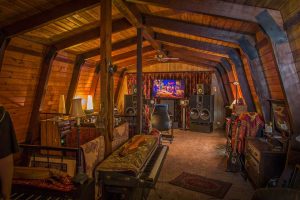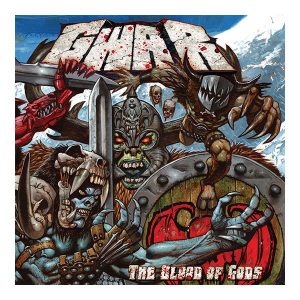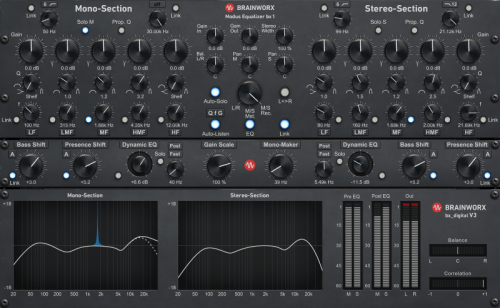 I have bought a lot of plugins from Plugin Alliance, and since becoming friends with the guys that run the company, I have helped them out with some volunteer beta testing and I have used some of their plugins in my videos (some of which they put on their website). This has given me the opportunity to get some NFRs for a bunch of the other plugins they sell (NFR means I get it for free, but can never sell or transfer the license).
I have bought a lot of plugins from Plugin Alliance, and since becoming friends with the guys that run the company, I have helped them out with some volunteer beta testing and I have used some of their plugins in my videos (some of which they put on their website). This has given me the opportunity to get some NFRs for a bunch of the other plugins they sell (NFR means I get it for free, but can never sell or transfer the license).
Plugin Alliance just announced an interesting new PickPack “rent to own” marketing idea. “Rent” any 10 of their plugins for $29 for 29 months. After 29 months you own the plugins. That got me thinking about what my top 10 plugins are from Plugin Alliance would be. So I thought about it and put this list together. I have never received a penny for recommending products from any company, so it makes no difference to me if you get in on that offer or not. I am just putting this together to share some info about what I use and why.
This list is not meant to tell you what would be the best deal, or even to tell you which of these plugins are the best, but only which ones I use day in and day out working on albums, video games, etc.
Brainworx bx_digital V3
https://www.plugin-alliance.com/en/products/bx_digital_v3.html
It took me a while to wrap my head around the intimidating interface, but once I did, I got hooked. I use this as the first step in my digital mastering chain as a problem solving tool. It has very flexible clean EQ and tools to fix problems with stereo imaging. I almost always use it in mid-side mode so I can sort out problems in the middle or the sides without having too much impact on the areas that do not need the fix. Honestly, I cannot think of the last time I have boosted with this EQ (except when using the bass or presence shift). It is probably good at that, but I have other hardware and software tools I like to use for boosting.
Brainworx bx_dynEQ V2
https://www.plugin-alliance.com/en/products/bx_dyneq_v2.html
This is a fantastic tool for fixing intermittent frequency problems. If you are not familiar with dynamic EQs, they are basically EQs that only work when the amount of energy in one frequency range exceeds a threshold. There are a lot of things you can do with them, but mostly I am using them on masters when there are certain parts of a song where one frequency gets really unpleasant. One great example of this is when you have a singer that gets harsh or nasally only in a certain register. Sometimes if you EQ out the harshness overall on a master, the vocals can sound dull on the non-harsh parts. This is also a great tool on drum overheads when there is one particular cymbal that gets overly harsh or piercing. This is another tool I almost always use in m-s mode. In mid-side I can be more aggressive on a center panned vocal without major impact on the guitars, etc. panned out to the sides.
Elysia nvelope
https://www.plugin-alliance.com/en/products/elysia_nvelope.html
 I LOVE transient shapers! The first time I used an SPL transient designer, I knew my mixing life would never be the same. The SPL Transient Designs plugin is great. In fact, it was the first plugin that I ever shot out against the hardware where I preferred the plugin. Most of the time I am using Transient shapers to reduce sustain on drums because “shorter” drums have so much more impact. But over the last few years I have been using the Elysia nvelope more because of its ability to adjust high and low frequencies independently. Being able to reduce the sustain of just the low end on a kick drum or floor top is a game changer. Here is a video I made about that.
I LOVE transient shapers! The first time I used an SPL transient designer, I knew my mixing life would never be the same. The SPL Transient Designs plugin is great. In fact, it was the first plugin that I ever shot out against the hardware where I preferred the plugin. Most of the time I am using Transient shapers to reduce sustain on drums because “shorter” drums have so much more impact. But over the last few years I have been using the Elysia nvelope more because of its ability to adjust high and low frequencies independently. Being able to reduce the sustain of just the low end on a kick drum or floor top is a game changer. Here is a video I made about that.
SPL Passeq
https://www.plugin-alliance.com/en/products/spl_passeq.html
Truth be told, I still do a huge amount of my EQ boosting in mixing and mastering sessions with hardware, but when I am boosting in the box, this is probably the one I use most. It sounds big and full and I can get away with a bigger range of processing than I would normally expect from a plugin. But, also, every once in a while I prefer this over the hardware. The Passeq is a “passive” style EQ (pultec-ish), and I love passive EQs for tone shaping. I have a few passive EQs in the hardware rack that I am crazy about, but sometimes their tone can color a little too much. The Passeq lets me do some of that passive style tone shaping with a little less coloration in the low end, which on certain masters can work better. Also, I love that I can use the EQ in m-s mode letting me tweak the center and sides independently. Here is a video I made about using the Passeq in a mastering session in that way.
ACME Opticom XLA-3 & Brainworx bx_opto
https://www.plugin-alliance.com/en/products/acme_opticom_xla-3.html
https://www.plugin-alliance.com/en/products/bx_opto.html
I love opto (or LA-2-ish) compressors. They sound so great on such a wide range of sources and are so insanely easy to use. I have a couple of hardware opto compressors in my racks that I use all the time, but I also use opto comps a lot in the the box and that usually happens with one of these two plugins. Without getting too deep into either one, I use the bx_opto when I want something on the cleaner side, and the opticom when I want more saturation and coloration. I dig them both, but day to day I find myself using the bx_opto more.
Elysia alpha compressor
https://www.pluginalliance.com/en/products/elysia_alpha_compressor.html
I use a ton of compression in my mixes and often push compressors pretty hard, but when I want very detailed control with compression, that I want to be transparent, this has become my go-to ITB compressor. I really like this one for acoustic guitars when I need more control than I can get from an opto compressor. It is great for getting kicks and snares to feel more consistent without altering the tone and in mastering when the coloration of my outboard compressors is not quite right.
 Maag EQ4
Maag EQ4
https://www.plugin-alliance.com/en/products/maag_eq4.html
Maag was started by the guys that started NTI/Nightpro years ago. The unique thing they did was an EQ with really wide bands and a high shelf “air” band with a really interesting curve. It was pretty mind blowing. I bought my NTI EQ in the mid 90’s. The cool trick with this air band is doing shelf boost at 20 or even 40k! This EQ can open up the top of vocals, drums, strings, etc., that is unlike anything else I have ever used. The Maag plugins bring that into the digital domain. I still have 4 hardware channels in my rack, which if find to be slightly better than the plugin, but not by much. I use the plugin EQ all the time. Everyone always talks about the high end boost of the EQ4 (and rightfully so), but it is worth noting that the low end is really unique. Many times I find that a slight cut on the “sub” band and a slight boost at 40Hz can do fantastic things to the low end of a mix. Here is a video about making vocals bright without harshness that features the EQ4
Brainworx bx_refinement
https://www.plugin-alliance.com/en/products/bx_refinement.html
You just have to demo this one to understand it. It is one of my favorite tools for fixing harsh elements in a mix (and a master in some extreme cases). Drum overheads or vocals or distorted guitars that have super harsh high-end (usually caused by using cheapo condenser mics) is one of the toughest things to deal with in a mix. When you use EQ to tame the problem the end result can often be a sound that has lost presence or clarity needed, or the mix really needs that high end to work. So you undo the EQ and you are back to the troublesome harshness. I have no idea how it does what it does, but bx_refinement somehow manages to soften the harshness of the sound without killing the high end energy. Some tape emulation plugins can be good for this as well, but they usually color the mids and lows a lot. bx_refinment does a good job of just focusing on the trouble in the high-end without changing the mids and lows too much.
Noveltech Character
https://www.plugin-alliance.com/en/products/noveltech_character.html
 This is another plugin that I honestly do not know what it is doing. It seems like a combination of EQ, dynamics and saturation that focuses presence and intensity in various ranges. This is not used on every mix I do, but is a godsend when I really want it. Sometimes simple EQ boosts do not get me quite what I am looking for (usually when looking to get things more “in your face”). It gets the most use trying to get keyboards and electric guitars to feel more aggressive in a pleasing way (is that an oxymoron?). I used this quite a bit on the new album “The Blood of Gods” by Gwar.
This is another plugin that I honestly do not know what it is doing. It seems like a combination of EQ, dynamics and saturation that focuses presence and intensity in various ranges. This is not used on every mix I do, but is a godsend when I really want it. Sometimes simple EQ boosts do not get me quite what I am looking for (usually when looking to get things more “in your face”). It gets the most use trying to get keyboards and electric guitars to feel more aggressive in a pleasing way (is that an oxymoron?). I used this quite a bit on the new album “The Blood of Gods” by Gwar.
So What about the Brainworx Console Channel Strips?
They are probably really cool, but, honestly, I do not own any of the new ones and I have not really spent serious time playing with the older one. If I was to grab one without serious testing it would probably be the bx_console G because I love mixing on G series SSL so much. But I have never used it so I cannot vouch for it.
A couple that almost made the list:
The new bx_rooMS reverb is pretty impressive so far and I could see myself using it quite a bit, but I have not had enough time to experiment with it to find out if it is going to be a regular part of my workflow. The Lindel TE-100 is a very cool EQ that has worked really well on a few projects, but has not become part of my regular workflow. Also, when I master, I am using several meters, and the bx_meter is one of those, but not the one I lean on the most.
Do you want some in person training?
We are presenting multiple Recording Boot Camps and Retreats this year in the US and Italy and several of them are close to selling out. Get more information about them HERE.
